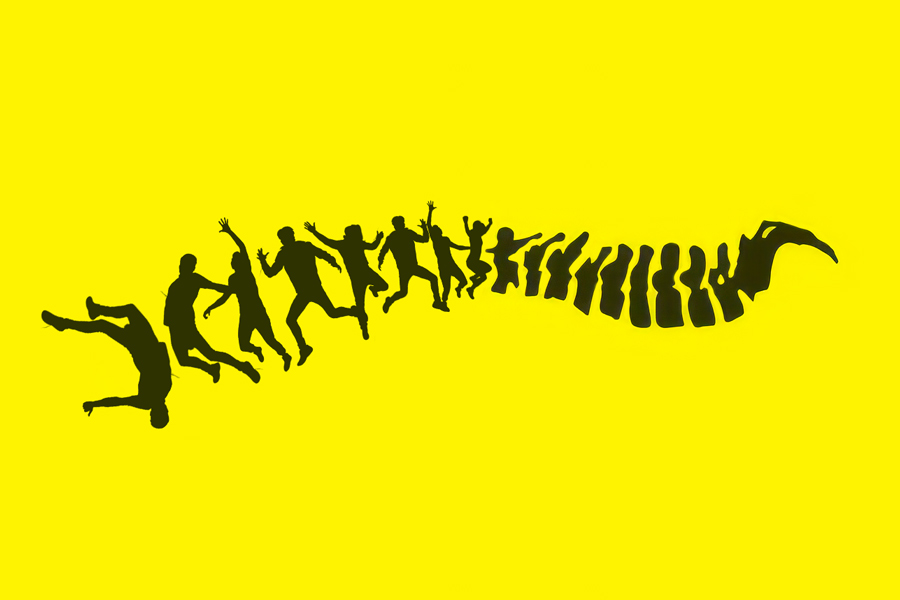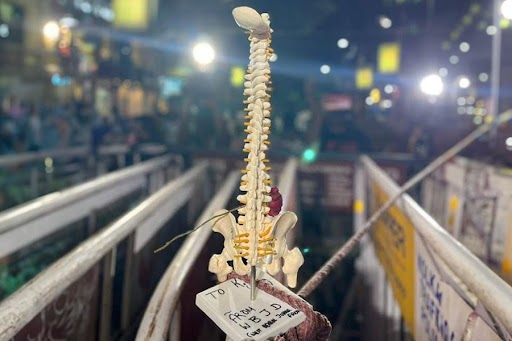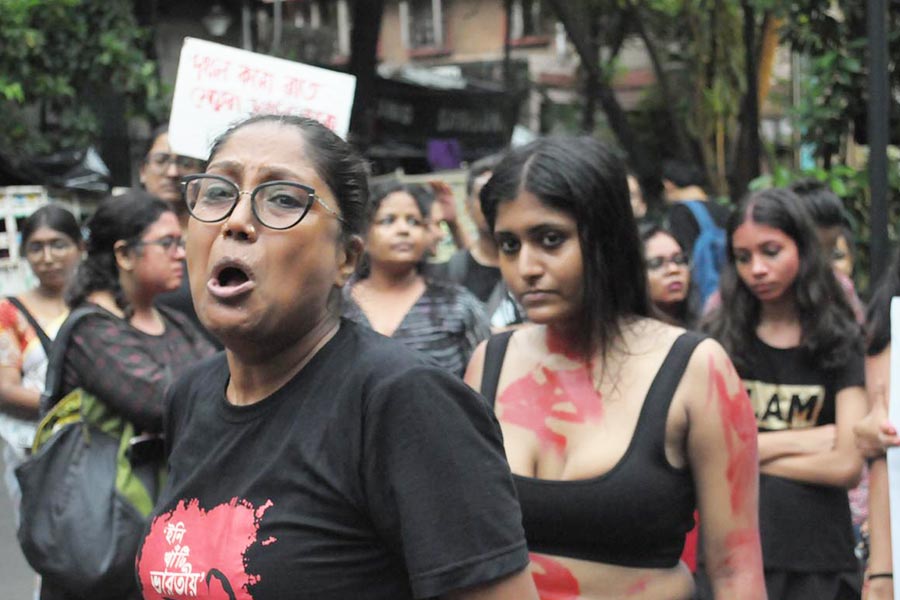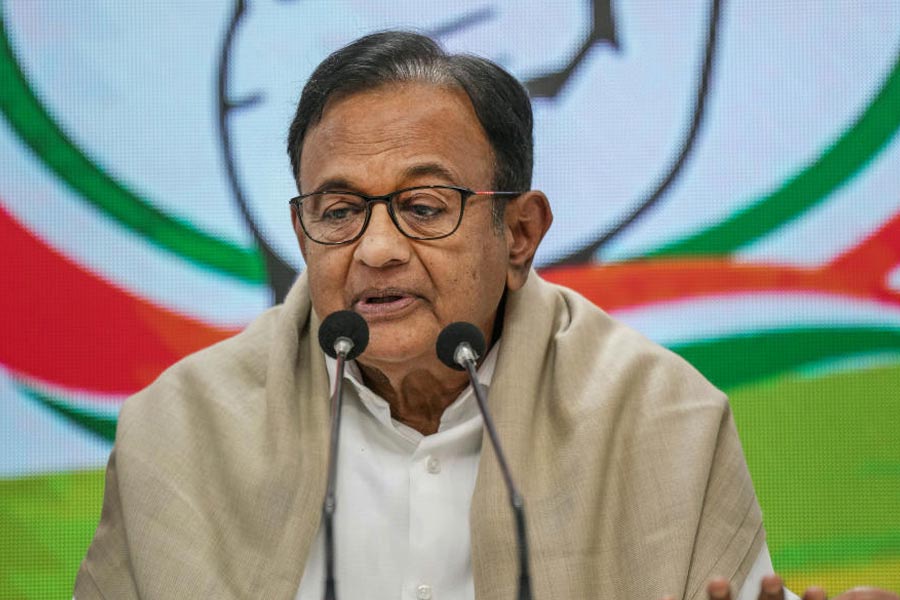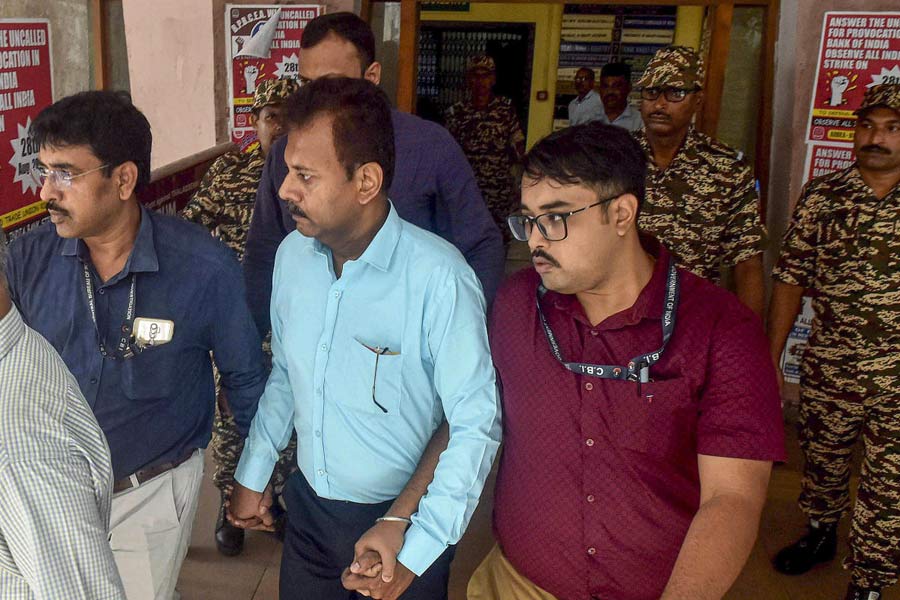A call was given to shut off power at 9pm for an hour at every home. Within a quarter of an hour, virtually the entire city turned dark. Okay, dark enough for us to take notice. A fortnight ago, a girl posted about “reclaim the night”, that too on Facebook, the last refuge of out of work fuddy-duddies we are told. She was calling for a midnight candle march. More than a million turned up.
This is Calcutta, the dying ‘City of Joy’ Calcutta that has stirred, spontaneously and without a leader. For nearly a month now, thousands of students have taken to the streets, marching, singing, shouting, adorning the roads with graffiti, setting the stage for boisterous street plays. Elders have joined in, so have doctors, nurses and homemakers, making it a people’s protest like never before with one reverberating cry: justice.
Job Charnock’s prized find is no stranger to protests. Rallies and dharnas have been the order of the day for decades on end. So what’s different this time? The city is in the throes of a fundamental churn, a churn so extraordinary that its swirl has engulfed not just the rest of the state, but in the whirligig of its mammoth sweep, got itself embedded into its psyche. In the process, the status quo has been shaken to the core.
So intrinsic has the seepage of this mood been that it’s no longer about the gruesome crime in a state-run hospital any more. It’s no longer about the arrested principal, no longer about the CBI probe. The doctor on duty who was raped and murdered has been christened Abhaya (fearless). Some are calling her Tilottama (demon slayer). And in her name, the march goes on day after day, night after night.
The mindset of the moribund has been rebooted. Tilottama’s shocking murder, the police failures and the institutional rot that it has foregrounded have coalesced into something fundamental, working as the trigger to a mobilisation of people who have found an avenue to vent about the current state of affairs in the once progressive state of Bengal. Social media is the driving force, naturally, with videos, pictures, posters being shared day and night. A full-time musician says nonchalantly on his Instagram handle that his morning routine is to find out the day’s protest venues and choose the one to join. Another posts a new sketch everyday: a Molotov cocktail followed by a bent spinal cord, the illustration populated by black figurines of a woman, referencing the telling gift a student delegation presented to the city’s police commissioner.
It’s like those Ten Days That Shook The World. In Trotsky’s words, power fell into the street, wrote APJ Taylor about Russia in his introduction to John Reed’s famously titled treatise on the Bolshevik revolution of 1917. Reed of course made it clear how in the struggle his own sympathies weren’t neutral, thereby revealing himself as a passionate socialist who was there reporting for The Masses, then the principal radical and socialist journal of the USA.
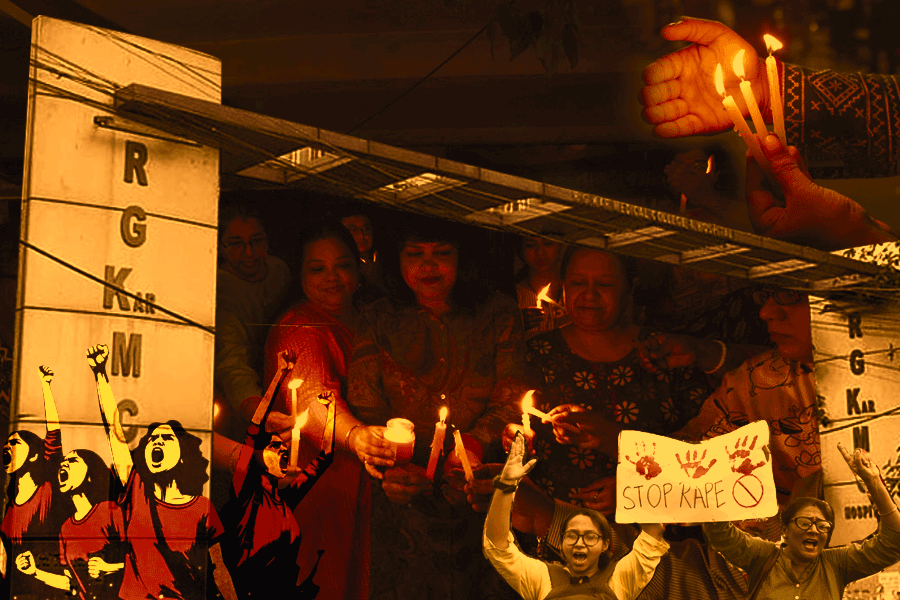
TTO Graphics
Is Calcutta 2024 mirroring the turbulence of Petrograd 1917?
It’s as though the people of the city have gained new eyes to see the decay in its civic space and say enough is enough. Suddenly, in deep focus is the overall erosion of democratic systems, an ineffective administration, an extortion based state economy, an inept police force and a long list of well-entrenched governance ailments that has been presided over with impunity by successive state governments the current avatar of which is led by a leader whose proclamations of “ma maati, manush” at every snowballing crisis at her door ring fake, hollow. She’s at her combative best when, say, a minister in her cabinet is linked to an apartment stashed with cash or when a teachers’ recruitment scam impacting hundreds of educated unemployed surfaces. She’s never at fault. It’s always others who are to blame.
No wonder the sweep of the protests has touched everyone. A retired professional sighs: Wish I was 40 again. A tailor dismisses losses she’s incurring in the pre-Puja season as a small price to pay in the fight for justice. An academic takes himself back to the spontaneous outpouring of outrage in Calcutta, a massive mass mobilisation, at the summary dismissal of the non-Congress government in Kerala in 1959, even finding local histories being re-created now while taking part in a march for Abhaya: The street we were walking on was where Latika, Pratibha and Geeta were killed back in 1949 when police fired on a women’s march.
Celebrities and actors have stepped out as usual. But this time, the usual photo-op seekers have been duly snubbed. As have been politicians scavenging for a cause to feast on. One actress, known to be close to the ruling regime, had to be escorted out by cops as the gathering she had gate-crashed wanted her to leave. This was unprecedented. It is clear that Bengal is sick and tired of cameo appearances by celebrities mouthing philosophical platitudes as if they are Amartya Sen. Is this a statement then? It sure looks like it, one that rings like a slap in the face of a kind of a politics championed by the chief minister. Pack legislatures with tone-deaf movie stars and starlets, and parade them as emblematic of the Trinamul Congress’s commitment to women’s empowerment.
We are a long way off from Petrograd, even though “multiform discontent of the people” that Reed documented is relatable. Events in sister city of Dhaka in Bangladesh were nothing short of landmark in that the protests forced an outcome. Those who know India, particularly Calcutta, will agree that the full-throated exuberance and energetic sustenance of the ongoing movement is pretty special, although the protests as such may seem like a chaotic performance of social theatre in which we feel virtuous and useful by staying on the right side of history.
Setting aside the question of outcome though, a beginning has been made with these protests. But does it matter? Yes it does, because we were there.

